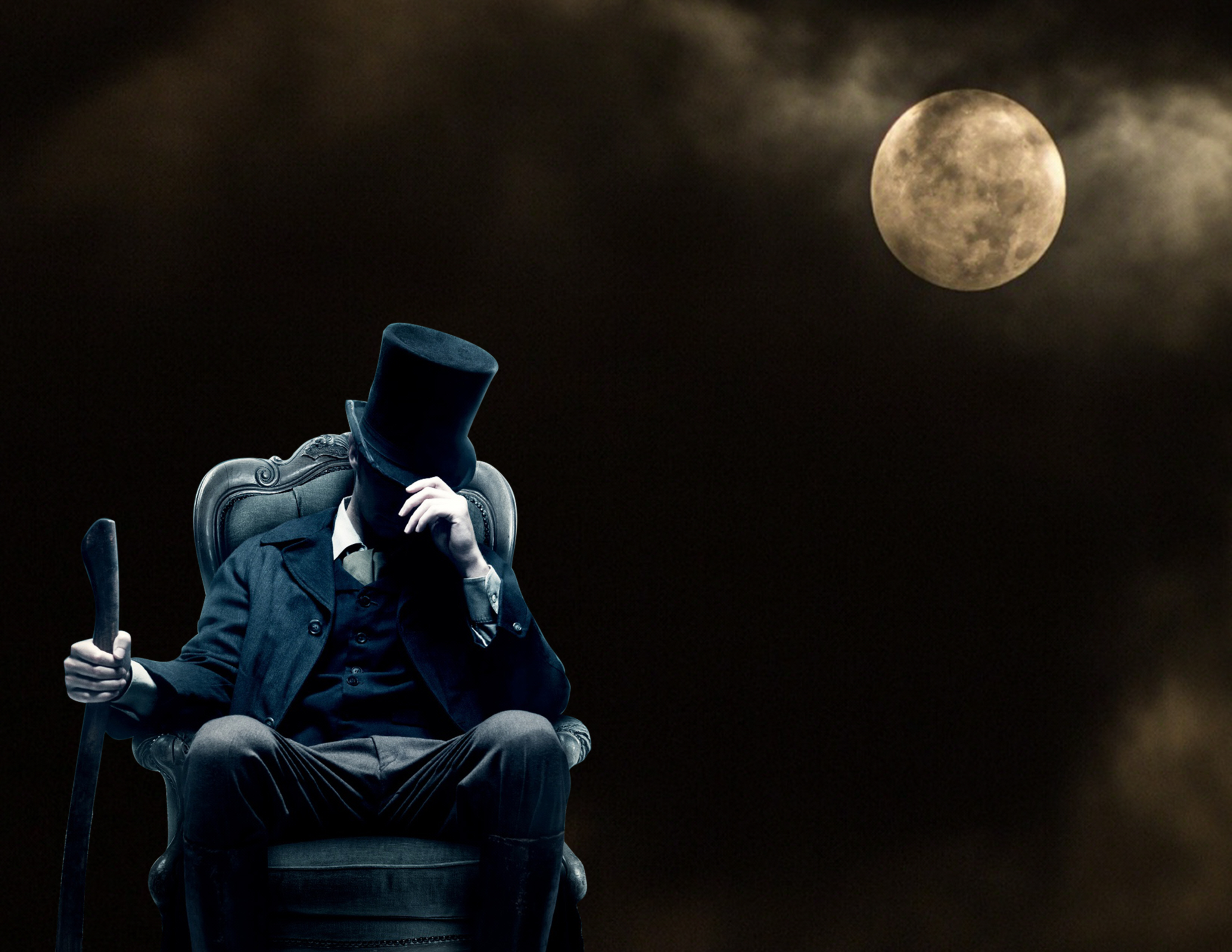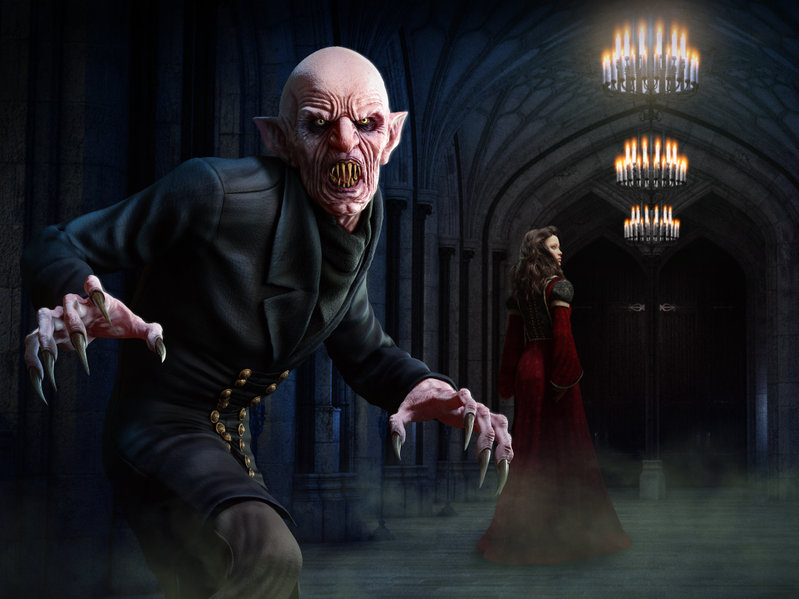 Submitted by Zoltan The Great on
Submitted by Zoltan The Great on

Derivative Images
From the ancient lore of the Slavic peoples through the Polish Romantic literature of Mickiewicz up to contemporary inspirations and the most recent archaeological finds, Polish vampires continue to curdle blood and inspire awe.
While contemporary popular culture tends to point toward Transylvania as the seat and heart of the vampiric myth, most scientists today agree that the concept of the vampire came to Western culture from the folklore of Slavic people, possibly that of the Balkan population of Serbo-Croats.
In fact, the belief in vampires, upierzs, and upiórs (as they are called today in Poland) are far more ancient and was once popular across the whole Slavic Europe, reaching also across areas populated by Hungarians, Romanians, and Greeks.
The original Slavic beliefs and imagery connected with vampirism greatly differ from the iconic Western imagery of vampires, popularized in the West by the works of Polidori or Stoker, and ubiquitous vampiric movies.
Maria Janion pointed to the fact that many iconic films about vampires, like Polanski's The Fearless Vampire Killers or Herzog's Nosferatu, both set in Transylvania, feature strange instances of Polish spoken by characters living near the vampire's castle. Was it just a coincidence? Or rather a metaphor, signalling a deeper meaning and suggesting that there are important Slavic and Polish undercurrents in the vampirical myth?
Moreover, rather than populating the area of the mythical, and today that of the pop, the Slavic vampire was very much part of the deepest folk beliefs – lying at the heart of the Slavic world-view.
How real the concept of vampires once was in the Slavic Europe and Poland in particular is best attested by one of the most accomplished experts of Slavic folk culture, Kazimierz Moszyński, who stated with emphasis in the 1930s that “a notable seat of vampirism was up to the most recent days located in the basin of the Lower Vistula”. He would also add, somewhat awed:
Whatever the Slavs claim about these half-daemonic creatures, it is filled with unbound savagery.
What is a Vampire in Slavic Mythology?
The most famous and influential work of Western vampirical literature, Bram Stoker's Dracula, portrays the main protagonist as a rather pale figure doomed to eternal life in his gloomy castle, where he lurks along his corridors dressed in some elaborate outfit, interested primarily in the blood of young virgins (but other creatures will also do). His wings, bloody regimen, and nocturnal lifestyle made him more similar to a bat than a proper vampir.
In fact, this goes rather far from the original and very real concept of vampires and vampirism rooted in the beliefs of the Slavic people. According to these ancient beliefs which have been suggested to go back as far as the 4th century AD, vampire or upiór were basically the ghosts of dead people, or even the living dead (a mix of the two, a corpse animated by its ghost, was also possible). The most popular beliefs have vampires and upiers pester living people, mostly by drinking or sucking their blood (from veins or heart), eating their flesh, or stifling their victims. Vampire would attack most likely their own family and relatives but could be interested in household animals too.
In fact, Slavic – and Polish folklore in particular – developed a whole array of such vampiric creatures, as well as names pertaining to them. In the areas populated by Western Slavs, these included names like upiór, wypiór, wąpierz, wampierz and strzygoń (known in English as Strigoi). The latter, having a femalevariant of strzyga, came to Polish from the Latin strix, but refers to a similar Slavic concept of a fierce, blood-thirsty daemon.
Crushed, bombed and robbed by unscrupulous and power-thirsty rulers, Poland's lands are soaked in blood, and its cities have been meticulously rebuilt on the bodies of those who died for them. With a legacy steeped in murder, death and terror beyond belief, it comes as no surprise that this should be reflected in legends.
But it seems likely that the original name for these infernal creatures in Poland was wąpierz or wampierz – words which are cognates with the Serbo-Croat vampir (a Southern Slavic variant of the word which has produced the English “vampire”) and upiór, this last word being the most popular Polish generic term for the frightening ghosts of the dead in general.
All of the above names, depending on time and locale, could have referred to individual creatures with their own specific distinguishing features, but they're basically all part of one concept, rooted in the primeval Slavic idea of life and death.
How did one become a Vampire?
There were many ways to become an upiór or vampire after death. One of the most popular folk beliefs held that a future strzygoń was born with two souls. According to this theory, there once were many more strzygoń around – their number, however, declined substantially after the rite of confirmation was introduced in Poland – this way, the second soul got baptized too. But remember, holy water must make contact with the child's body, otherwise the rite will not work, and the child runs a big risk of growing up to be an upiór (that is, after its death).
Another sure sign of a strzygoń-to-be is being born with two hearts. An additional row of teeth or a unibrow could also serve as a good indication of who you're actually dealing with. A baby born with teeth runs also a high chance of becoming a strzygoń. Another popular belief links upiórs with those who died with a sudden death or, even more so, those who committed suicide.
But the underlying concept behind much of these myths seems to be a deep belief, shared by Slavic peoples, that an evil person would remain an evil person in the afterlife.
As we can see, becoming a strzygoń, upiór or vampire was a fairly universal procedure in the Slavic world, as even babies were on the way to becoming vampires. It was also quite democratic, considering that priests too could have become upiórs. Anyway, the Slavic concept of becoming a vampire seems to be telling us this at least: the roots of evil lie hidden deep under the surface of reality and seem unfathomable at first.
How to Kill a Vampire... the Slavic Way -
The numerous ways with which Slavic folk tried to disable vampires (or dead people suspected of vampiric inclinations) make for a catalogue that in many respects is familiar, well-known from films and books about vampires. Even if here, we're basically talking about things done to a corpse lying in the grave, and the Hollywood vampiric lore teaches us how to actually fight a living vampire.
According to the Slavic vampire hunters (that is, peasants), the body of a potential vampire was to be buried deep and then covered with a heap of rocks; the corpse should be buried with his face to the ground “so that he bites the earth”
Poppy seeds were thrown inside the coffin. A sickle or scythe was placed over the neck of the corpse so that the head would be removed if the vampire attempted to rise. A pebble or coin was placed under the tongue of the corpse, and its hands were tied behind its back. To prevent the potential vampire from rising from the grave, the body's feet were mutilated and the sinews in its legs, cut.
It was not uncommon in Poland for the head to be removed and placed between the legs so that the vampire wouldn't be able to reach it (one can easily imagine how this could have likely led to a popular image portraying a vampire or some other zombie-like creature as carrying his head in his hands). Spikes were driven into the flesh of the tongue, probably to prevent the upiór from sucking blood.
However, the most popular way to prevent vampires from rising from the dead was to pierce their head or heart with a sharp wooden stake. The material used could have varied depending on the location, the Southern Slavs seem to have preferred hawthorne, while elsewhere the most popular material was aspen wood, with maple and linden wood also popular.
Some archaeological finds in Poland show that our ancestors also used iron nails or rods. The nail would enter the skull in the forehead or near the crown area, and piercing through the brain, it would emerge from the back of the head.
The abundance of such archaeological finds in Poland but also elsewhere in Europe led Kazimierz Moszyński to suspect that this practice and vampirism itself may once have been far more widespread than is generally acknowledged, reaching beyond the areas populated by Slavic people and ranging beyond historical times.
There's a pending question whether all those excavated skulls, considered by pre-historians as trepanned, were defined correctly so. In other words, there could be among them also skulls that were pierced through with a wooden peg which, in a natural course of events, would have subsequently rotted in the ground.
If correct, this hypothesis would make vampirism a far more widespread belief, going back to pre-historic times.
Myth and reality -
The same ethnographer saw a close connection between the vampiric myth and the spread of epidemic diseases in early modern Eastern and Central Europe. In fact, these two phenomena seem to be interconnected, as cases of vampire hunts often seem to follow eruptions of epidemic diseases. As Moszyński explains, whenever there was a series of fatalities among the livestock or humans of a village or household caused by some deadly disease, peasants would unearth the body of the first person to die, or the person suspected of vampirism, and perform the usual sequence of anti-vampiric procedures.
In some cases, this would result in the whole village participating in uncovering dead bodies in search of a corpse that showed some suspicious signs of vampirism. The body still being fresh, or having reddened lips or – better still – blood in the corner of its mouth, were considered the ultimate proof of the vampiric condition.

Image by warpaintcobra from http://123rf.com
Mikołaj Gliński
Read more @ https://culture.pl/en/article/polish-vampires-bloody-truth-behind-dark-myth
Posted for informational/educational purposes only.
- 638 reads